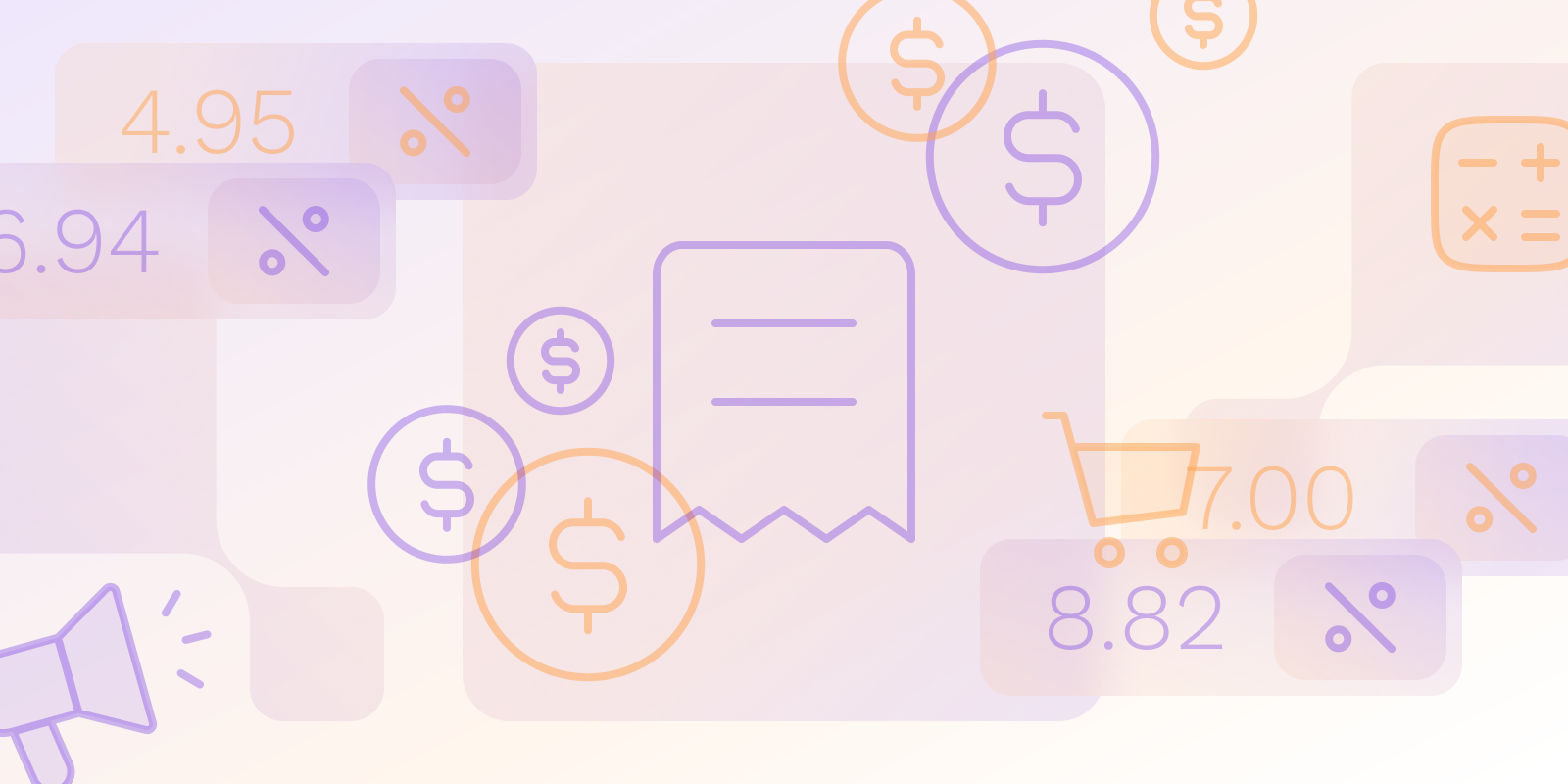Revenue vs. Income: A Side-by-Side SaaS Comparison

SaaS revenue and income are often used interchangeably, but in business they represent very different financial realities. Understanding the distinction is crucial for accurate growth measurement, better financial decisions, and long-term profitability.
This guide breaks down the difference between SaaS/software revenue and income, using real-world SaaS examples and exploring how tools like PayPro Global can help maximize both metrics.
What Is SaaS Revenue?
Revenue (also called top-line or gross sales) is the total amount earned through a company’s core operations—before any expenses are deducted.
Key Characteristics:
- Measures all incoming money from product sales, subscriptions, services, etc.
- Does not account for costs like payroll, marketing, or taxes.
- Indicates market demand and business volume.
SaaS Revenue Formula:
Revenue = Units Sold x Price Per Unit
Pro Tip
If no prefix is used (e.g., gross or net), revenue typically refers to gross revenue.
What Is SaaS Income?
Income (often referred to as net income or bottom line) is the actual profit remaining after all business expenses have been subtracted from revenue.
Key Characteristics:
- Represents what the company keeps after operational costs.
- Used to measure profitability and financial health.
- The metric most scrutinized by investors, banks, and stakeholders.
SaaS Income Formula:
Net Income = Revenue – (Operating Costs + Taxes + Interest + Other Expenses)
SaaS Revenue vs. Income: Quick Comparison
|
Factor |
Revenue |
Income |
|
Also Known As |
Top-line, Gross Revenue |
Net Profit, Bottom-line, Net Income |
|
When It's Calculated |
Before expenses |
After all expenses |
|
What It Measures |
Total earnings |
Actual profitability |
|
Investor Focus |
Shows growth potential |
Shows financial viability |
|
Common Use Case |
Market performance tracking |
Decision-making, budgeting |
SaaS Revenue vs. Income Example
Let’s take a SaaS company, Company X:
Revenue: $100,000 from software subscriptions and services.
Income: $50,000 after deducting expenses like salaries, marketing, infrastructure, and taxes.
Although revenue doubled from last year, income reveals the true profitability. A company may show impressive revenue growth due to a successful product launch, but unless income increases too, its long-term success may be questionable.
SaaS Revenue Vs. Income: Why Knowing the Difference Matters
1. Financial Health Assessment
Understanding both metrics provides a 360-degree perspective of your SaaS firm.
Revenue reflects successful sales and demand.
Income reveals whether those efforts were profitable.
By comparing them, SaaS owners may determine which revenue streams generate genuine profit and adapt their strategy accordingly.
2. Cost Control and Optimization
To differentiate between the two, take a look at the purpose of each metric:
Revenue reflects successful sales and demand.
Income reveals whether those efforts were profitable.
By comparing them, SaaS owners may determine which revenue streams generate genuine profit and adapt their strategy accordingly.
3. Accurate Budget Planning
Forecasting becomes guesswork if revenue and income are not understood.
The distribution of resources is inefficient.
Growth targets become irrational.
Data-driven budgets and strategic growth plans can be developed by SaaS organizations by monitoring these key metrics.
4. Taxation and Regulatory Compliance
Net income, not revenue, is the basis for global tax compliance.
There may be serious fines or legal repercussions for underreporting.
Accurate financial reporting is ensured by knowing income. Global tax compliance and audits go more smoothly.
4. Investor and Stakeholder Trust
Investors are concerned with long-term viability rather than dazzling revenue metrics.
One-time promotions or seasonal spikes might cause revenue to increase.
Income measures operational strength and long-term value.
Being able to properly separate and explain these measures increases credibility among stakeholders.
eCommerce Partner
Thrive with the industry's most innovative all-in-one SaaS & Digital Goods solution. From high-performing payment and analytics tools to complete tax management, as well as subscription & billing handling, PayPro Global is ready to scale your SaaS.
Sell your SaaS globally with PayPro Global!
Spotlight on SaaS: Why Subscription Revenue Matters
SaaS businesses thrive on Monthly Recurring Revenue (MRR) or Annual Recurring Revenue (ARR). Why?
Ongoing income from loyal customers.
Easier financial forecasting for budgeting and scaling.
Higher investor appeal due to revenue consistency.
Example:
A SaaS app generates $10,000/month from 500 subscribers. With minimal churn and optimized costs, net income becomes predictable—and highly scalable.
How a Merchant of Record (MoR) Like PayPro Global Boosts SaaS Revenue and Income
What Is a Merchant of Record?
A Merchant of Record (MoR) is a legal entity that sells your product on your behalf, managing:
- Cross-border payments
- Global tax compliance
- Fraud prevention
- Subscription billing
- Localization
- Revenue Optimization
How PayPro Global Maximizes SaaS Revenue
Global Reach: Expand worldwide with local payment methods, currencies, and languages.
Subscription Growth: Advanced subscription tools, upsell/cross-sell features, and discount code management.
Boost Revenue: Streamlined checkout experience = higher conversion rates.
How PayPro Global Increases Net Income
Tax Compliance management: No more costly tax missteps. PayPro handles VAT, GST, and other regulations across 200+ jurisdictions.
Fraud Prevention: Reduce chargebacks and payment fraud with AI-driven protection.
Lower Costs: One system replaces multiple vendors = reduced overhead.
eCommerce Partner
Thrive with the industry's most innovative all-in-one SaaS & Digital Goods solution. From high-performing payment and analytics tools to complete tax management, as well as subscription & billing handling, PayPro Global is ready to scale your SaaS.
Sell your SaaS globally with PayPro Global!
SaaS Revenue vs Income for SaaS Decision-Makers
|
Choose This Metric When You Need To... |
Metric to Prioritize |
|
Track overall business activity |
Revenue |
|
Measure real profitability and growth |
Income |
|
Make operational and strategic decisions |
Income |
|
Appeal to investors or lenders |
Income |
|
Analyze market demand or product interest |
Revenue |
Final Thoughts
Income and revenue may be synonymous in certain instances, but they are far from the same. In fact, in the world of business, they are not interchangeable, and they provide two different sides of the same story. Grasping the difference between revenue and income, as well as continuously tracking them, is vital to ensure the overall financial health of your business.
Top-line, bottom-line, there is no question that growth can be interpreted in multiple ways. Developing strong strategies with the potential to increase your profit is only possible when understanding what works and what doesn’t.
FAQs
What's the simple difference between revenue and income?
Revenue is the total money a company earns from sales before deducting any costs. Income (or net income) is the actual profit left over after all expenses are subtracted. Simply put, revenue is what you make, and income is what you keep.
Is net income the same as profit?
Yes, net income is the same as profit. The terms "net income," "net profit," and "bottom line" all refer to the final profit remaining after all business expenses have been paid. It is the primary measure of a company's profitability.
Why is income more important than revenue for SaaS growth?
Income is more important because it measures true profitability and financial health. High revenue shows market demand but can hide high costs. Investors focus on net income because it proves a SaaS business model is not only popular but also efficient and viable long-term.
If my revenue is growing, isn't that a good sign?
Yes, growing revenue shows strong market demand, but it's only half the story. Revenue growth without matching income growth is a red flag that costs may be too high. For sustainable growth, both revenue and net income must increase together.
How do you calculate net income for a software company?
You calculate net income with the formula: Net Income = Total Revenue – Total Expenses. For a software company, "Total Expenses" includes all operating costs like salaries, hosting, and marketing, in addition to taxes and interest.
Ioana Grigorescu
Ioana Grigorescu is PayPro Global's Content Manager, focused on creating strategic writing pieces for SaaS, B2B, and technology companies. With a background that combines Languages and Translation Studies with Political Sciences, she's skilled in analyzing, creating, and communicating impactful content. She excels at developing content strategies, producing diverse marketing materials, and ensuring content effectiveness. Beyond her work, she enjoys exploring design with Figma.
-
1.Explore PayPro Global's Solutions: See how our platform can help you streamline your payment processing and boost revenue.
-
2.Get a Free Consultation: Discuss your specific needs with our experts and discover how we can tailor a solution for you.
-
3.Download our Free Resources: Access valuable guides, checklists, and templates to optimize your online sales.
-
4.Become a Partner: Expand your business by offering PayPro Global's solutions to your clients.
- Revenue ≠ Income. Revenue measures earnings; income measures profit.
- For SaaS companies, income is the real growth indicator.
- Tools like PayPro Global can significantly boost both revenue and income by simplifying global payments, taxes, and billing.
Get the latest news



